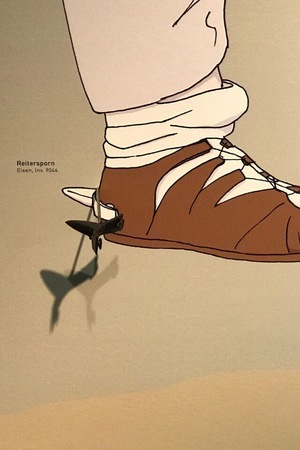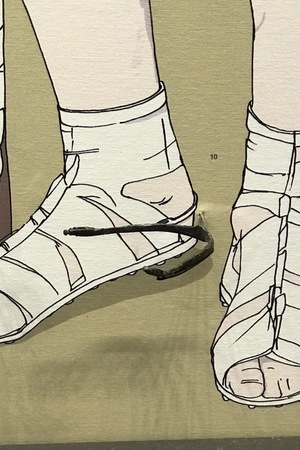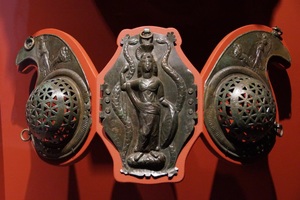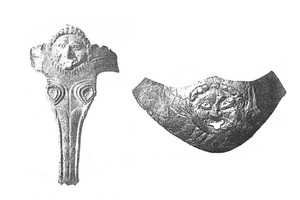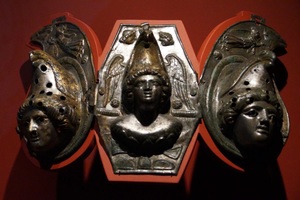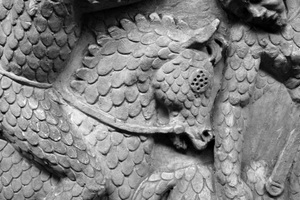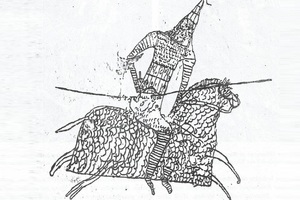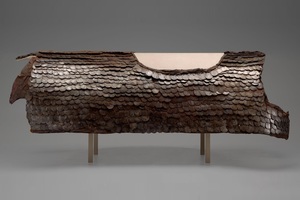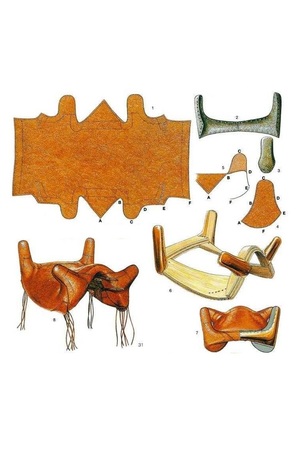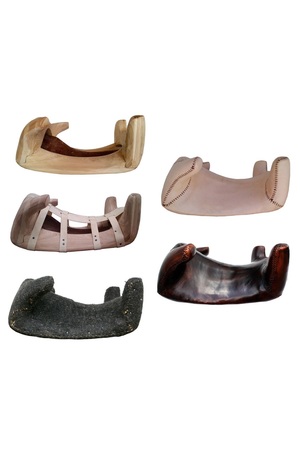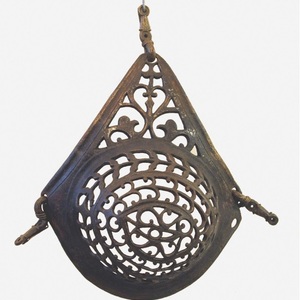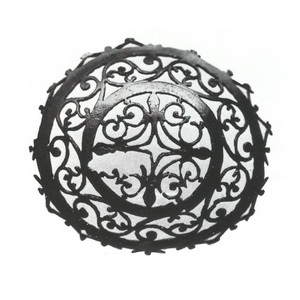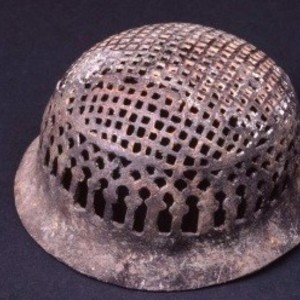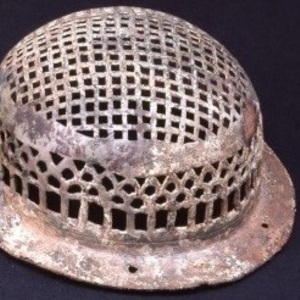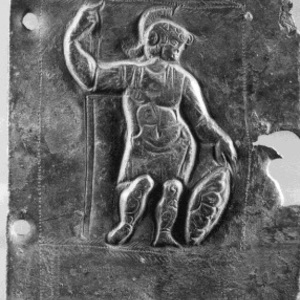Roman Equestrian Equipment
The Latin term for horse is "equus," from which the term for a mounted warrior, "eques" (Latin: equites), is derived. The modern word "cavalry" comes from the Latin word "caballus," meaning "horse" or "nag." Mounted warriors could be armed with spears, bows, and long swords with shields, and horses in Ancient Rome were armored as well as their riders.
 Gravestone of Rider Silius from Dienheim with Restored Colors. Inv. Nr. S50 Mainz, Germany. 2nd Century AD
Gravestone of Rider Silius from Dienheim with Restored Colors. Inv. Nr. S50 Mainz, Germany. 2nd Century AD
Equestrian Equipment in Antiquity
The equipment necessary for horse riding included harnesses, spurs, and saddles. The rider stayed securely in the saddle and controlled the horse using the harness, but stirrups did not exist in antiquity; they appeared much later, in the Medieval era. Horse harnesses could be decorated with round plates similar to phalerae. In addition to phalerae, horses could have numerous decorative elements as intricate and beautiful as the embossed equipment of the riders. Protective metal plates could be adorned with engravings or embossing featuring complex, often mythological, scenes and made from colored metals.
 Sketch of Roman Spurs
Sketch of Roman Spurs
Roman spurs (calcaria) were borrowed from the Macedonians, who first used them during the time of Philip II. Spurs were widely used throughout the Empire, and many archaeological finds attest to this. They typically had a crescent shape that tightly fit the rider's heel and often featured a 1-4 cm long spike on the back. Spurs were fastened to the shoes (caligae and calceae) with leather straps. Interestingly, in Ancient Rome, spurs were used to slow down the horse's movement, even to a full stop. If the horse accelerated, the rider would spur it, training the horses to carry their riders carefully.
Like the rider, the horse could be well-protected with armor. Archaeologists have mainly found scale horse armor. The head was protected by a special helmet, often decorated with intricate embossed scenes. This helmet frequently protected the eyes while allowing good visibility, with the eye openings featuring not just mesh but intricate pattern work. The widespread use of horse armor is confirmed by both archaeological and visual sources. According to modern terminology, the set of horse armor can be classified as barding.
Bard (Barding) — the term for horse armor (usually referring to the Medieval period). It is made from metal plates, chainmail, leather, or quilted fabric. It consisted of the following elements: chanfron (muzzle protection), crinet (neck protection), peytral (chest protection), croupiere (rump protection), and flanchard (side protection).
Enemies of Rome also actively used heavily armored cavalry in battle. On Trajan's Column, Parthian cataphracts are depicted: not only the riders but also the horses are well-protected, covered with scale armor on their bodies and heads. Rome adopted this type of cavalry, which later became part of the army of the Eastern Roman Empire.
Among other elements of ancient equestrian equipment, the saddle holds primary importance. Since the rider had to stay confidently on the horse without stirrups and fight simultaneously, the saddle's reliability and ergonomics were of utmost importance. It was made from leather stretched over a wooden frame and filled with felt. Patterns and production stages of the reconstructed ancient saddle are presented in the illustrations below.
Related topics
Equites-riders, Gladiator Equites, Phalerae, Auxiliary Rider
Literature
Evidence for horse armour in the Roman Army - Sebastian Schuckelt.pdf

 Gallery
Gallery






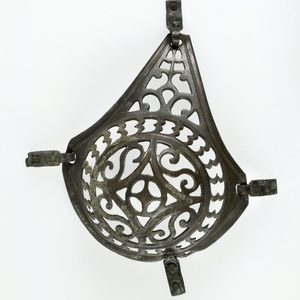 Horse Eye Protection, Type B. Bronze. Found in Weisenau, Germany. Housed in Mittelrheinisches Landesmuseum, Mainz. Inv. 29.II.04. 1st Century AD.
Horse Eye Protection, Type B. Bronze. Found in Weisenau, Germany. Housed in Mittelrheinisches Landesmuseum, Mainz. Inv. 29.II.04. 1st Century AD.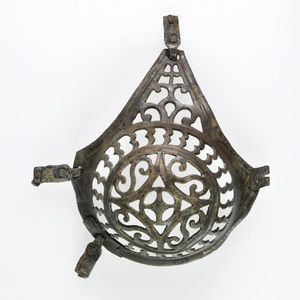 Horse Eye Protection, Type B. Bronze. Found in Weisenau, Germany. Housed in Mittelrheinisches Landesmuseum, Mainz. Inv. 29.II.04. 1st Century AD.
Horse Eye Protection, Type B. Bronze. Found in Weisenau, Germany. Housed in Mittelrheinisches Landesmuseum, Mainz. Inv. 29.II.04. 1st Century AD.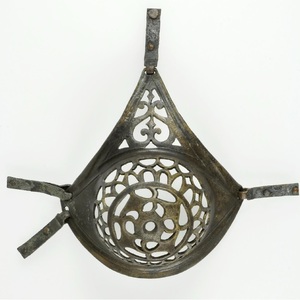 Horse Eye Protection, Type B. Bronze. Found in Weisenau, Germany. Housed in Mittelrheinisches Landesmuseum, Mainz. Inv. 3.X.98. 1st Century AD.
Horse Eye Protection, Type B. Bronze. Found in Weisenau, Germany. Housed in Mittelrheinisches Landesmuseum, Mainz. Inv. 3.X.98. 1st Century AD.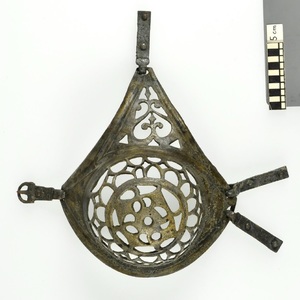 Horse Eye Protection, Type B. Bronze. Found in Weisenau, Germany. Housed in Mittelrheinisches Landesmuseum, Mainz. Inv. 3.X.98. 1st Century AD.
Horse Eye Protection, Type B. Bronze. Found in Weisenau, Germany. Housed in Mittelrheinisches Landesmuseum, Mainz. Inv. 3.X.98. 1st Century AD.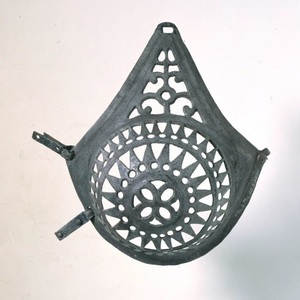 Horse Eye Protection, Type B. Bronze. Found in Weisenau, Germany. Housed in Mittelrheinisches Landesmuseum, Mainz. Inv. 10.06.1898. 1st Century AD.
Horse Eye Protection, Type B. Bronze. Found in Weisenau, Germany. Housed in Mittelrheinisches Landesmuseum, Mainz. Inv. 10.06.1898. 1st Century AD.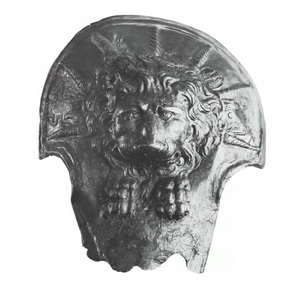 Horse Head Protection Type D. Bronze. Found in Neuss Fort, Germany. Rheinisches Landesmuseum, Bonn, Inv. 9261. 1st Century AD.
Horse Head Protection Type D. Bronze. Found in Neuss Fort, Germany. Rheinisches Landesmuseum, Bonn, Inv. 9261. 1st Century AD.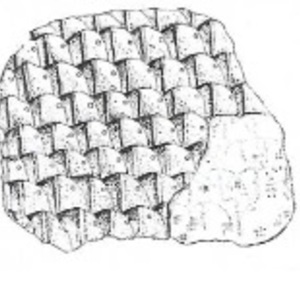 Complete Scale Armor Set for a Horse, Late 1st - Early 2nd Century AD, Found in Tumulus I, Grave 2 at Chatalk, Bulgaria.
Complete Scale Armor Set for a Horse, Late 1st - Early 2nd Century AD, Found in Tumulus I, Grave 2 at Chatalk, Bulgaria.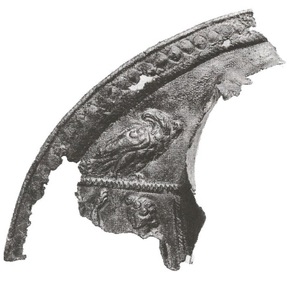 Fragment of Three-Part Chanfron, Type C, 2nd-3rd Century AD, Museum of the Province of Antiquities, Utrecht, Netherlands.
Fragment of Three-Part Chanfron, Type C, 2nd-3rd Century AD, Museum of the Province of Antiquities, Utrecht, Netherlands.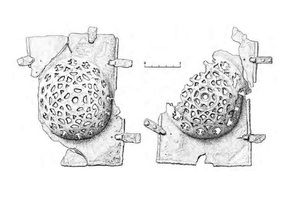 Horse Eye Protection Type B. Found in the Barracks of Herrera de Pisuerga, Spain. Provincial Archaeology Museum of Spain. 1st Century BC - 1st Century AD.
Horse Eye Protection Type B. Found in the Barracks of Herrera de Pisuerga, Spain. Provincial Archaeology Museum of Spain. 1st Century BC - 1st Century AD.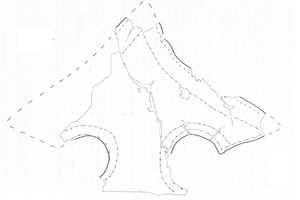 Fragment of a Leather Saddle, Type A. Found at Carlisle Fort. Housed in Carlisle Museum. UK. Around 90 AD.
Fragment of a Leather Saddle, Type A. Found at Carlisle Fort. Housed in Carlisle Museum. UK. Around 90 AD.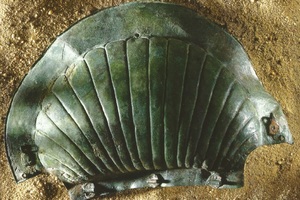 Fragment of Horse Protection, Type D. Found in Nijmegen, Netherlands. Museum Het Valkhof, Nijmegen. Inv. CA.1993.100.07324. 1st Century AD.
Fragment of Horse Protection, Type D. Found in Nijmegen, Netherlands. Museum Het Valkhof, Nijmegen. Inv. CA.1993.100.07324. 1st Century AD.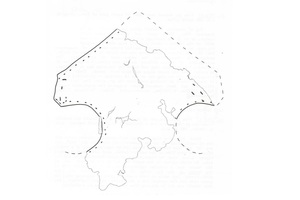 Fragment of a Leather Saddle, Type A. Found at Carlisle Fort. Housed in Carlisle Museum. UK. Around 90 AD.
Fragment of a Leather Saddle, Type A. Found at Carlisle Fort. Housed in Carlisle Museum. UK. Around 90 AD.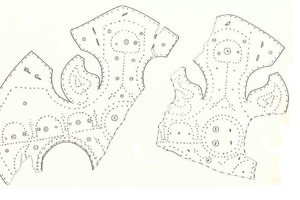 Fragment of a Leather Chanfron, Type A, circa 100 AD. Material: Leather, Diameter: 38 cm, Roman Army Museum, Vindolanda.
Fragment of a Leather Chanfron, Type A, circa 100 AD. Material: Leather, Diameter: 38 cm, Roman Army Museum, Vindolanda.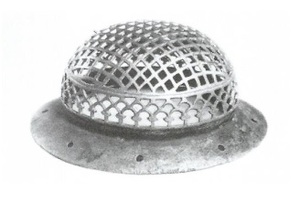 Single Eye Protection, Part of a Chanfron, Type A (possibly paired with the find in Lith), 1st-2nd Century AD, Found in Megen, Netherlands.
Single Eye Protection, Part of a Chanfron, Type A (possibly paired with the find in Lith), 1st-2nd Century AD, Found in Megen, Netherlands.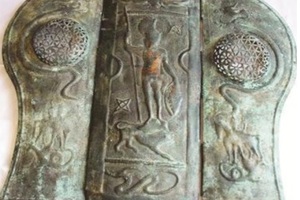 Large Three-Part Chanfron, Type C, Late 2nd - Early 3rd Century AD, anakkale Archaeology Museum, Turkey.
Large Three-Part Chanfron, Type C, Late 2nd - Early 3rd Century AD, anakkale Archaeology Museum, Turkey.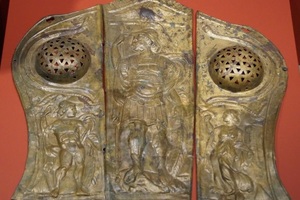 Large Three-Part Chanfron, Type C, First Third of the 3rd Century AD, Gäubodenmuseum, Straubing, Germany.
Large Three-Part Chanfron, Type C, First Third of the 3rd Century AD, Gäubodenmuseum, Straubing, Germany.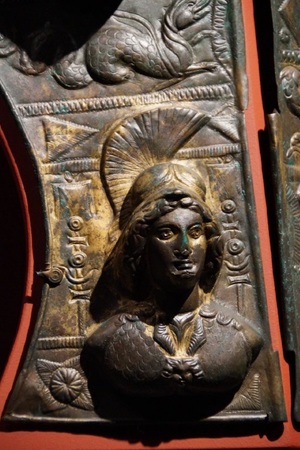 Fragment of Three-Part Horse Protection, Type C. Early 3rd Century AD. Bronze. Found near Straubing, Germany. Housed in Gäubodenmuseum.
Fragment of Three-Part Horse Protection, Type C. Early 3rd Century AD. Bronze. Found near Straubing, Germany. Housed in Gäubodenmuseum.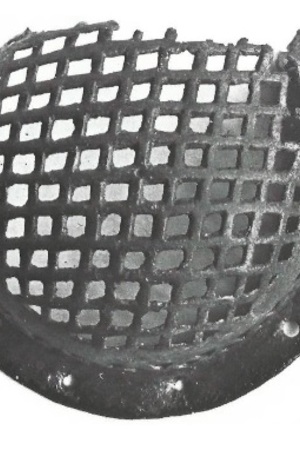 Protective eye cover, chamfron type A. Leather. 1st-2nd centuries AD, Römisch-Germanisches Zentralmuseum, Mainz, Germany.
Protective eye cover, chamfron type A. Leather. 1st-2nd centuries AD, Römisch-Germanisches Zentralmuseum, Mainz, Germany.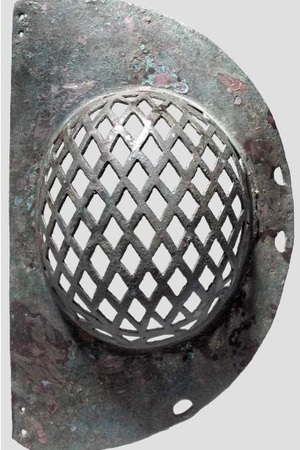 Single eye guard with a metal plate, type B, 1st-2nd centuries AD, private collection in southern Germany.
Single eye guard with a metal plate, type B, 1st-2nd centuries AD, private collection in southern Germany.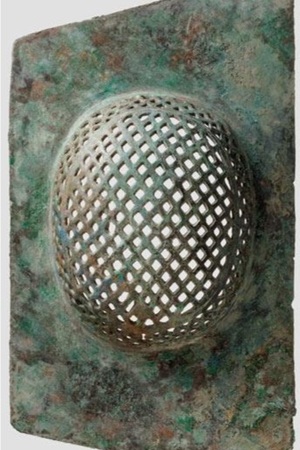 Single eye guard with a metal plate, type B, 1st-2nd centuries AD, private collection, Hermann Historica auction catalog, auction 66.
Single eye guard with a metal plate, type B, 1st-2nd centuries AD, private collection, Hermann Historica auction catalog, auction 66.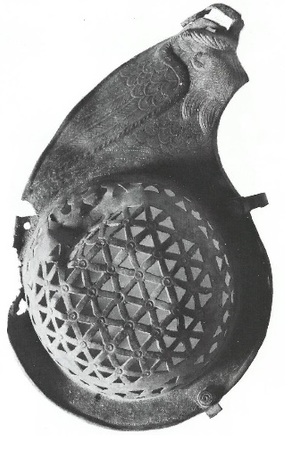 Left side plate from a three-part chamfron, type B, Date: 2nd century AD, Museum der Stadt Regensburg, Germany.
Left side plate from a three-part chamfron, type B, Date: 2nd century AD, Museum der Stadt Regensburg, Germany. Large three-component chamfron, type C, second half of the 2nd / beginning of the 3rd century AD, Cluj History Museum, Romania.
Large three-component chamfron, type C, second half of the 2nd / beginning of the 3rd century AD, Cluj History Museum, Romania.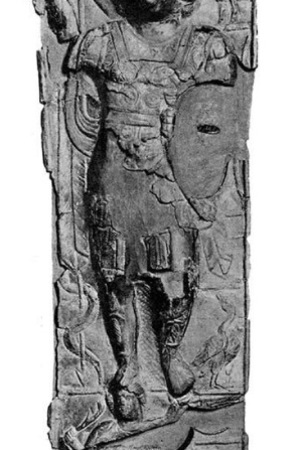 Central panel from a three-part chamfron, type C, 2nd-3rd centuries AD, Weissenburg Museum, Germany.
Central panel from a three-part chamfron, type C, 2nd-3rd centuries AD, Weissenburg Museum, Germany.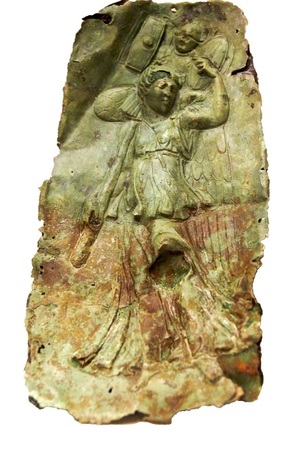 Central part of a three-part chamfron, type C, 2nd-3rd centuries AD, Caerleon Museum, United Kingdom.
Central part of a three-part chamfron, type C, 2nd-3rd centuries AD, Caerleon Museum, United Kingdom.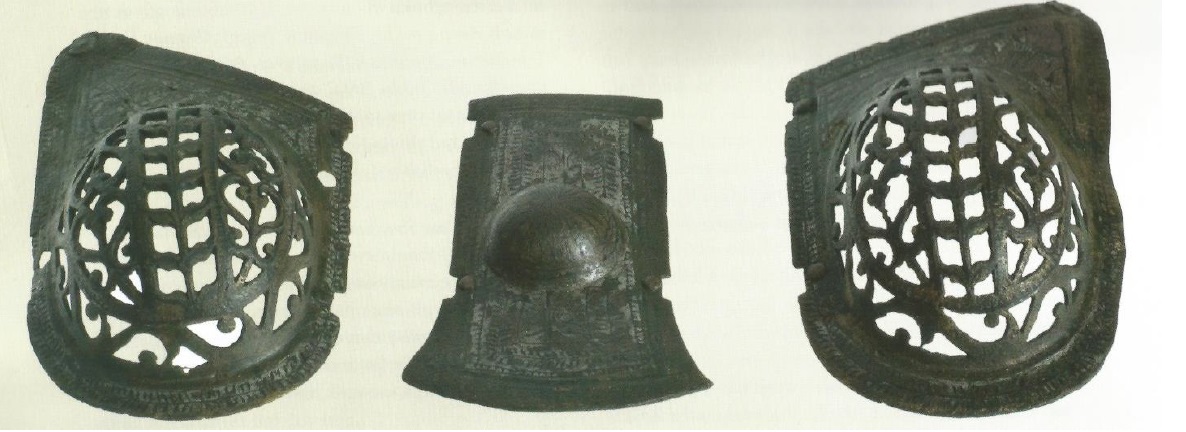 Three-part horse head protection, type B. Iron with silver plating. 1st century AD. Found in Dalj, Croatia. Held in the Archaeological Museum of Zagreb. Inv. AMZ 9231.
Three-part horse head protection, type B. Iron with silver plating. 1st century AD. Found in Dalj, Croatia. Held in the Archaeological Museum of Zagreb. Inv. AMZ 9231.
